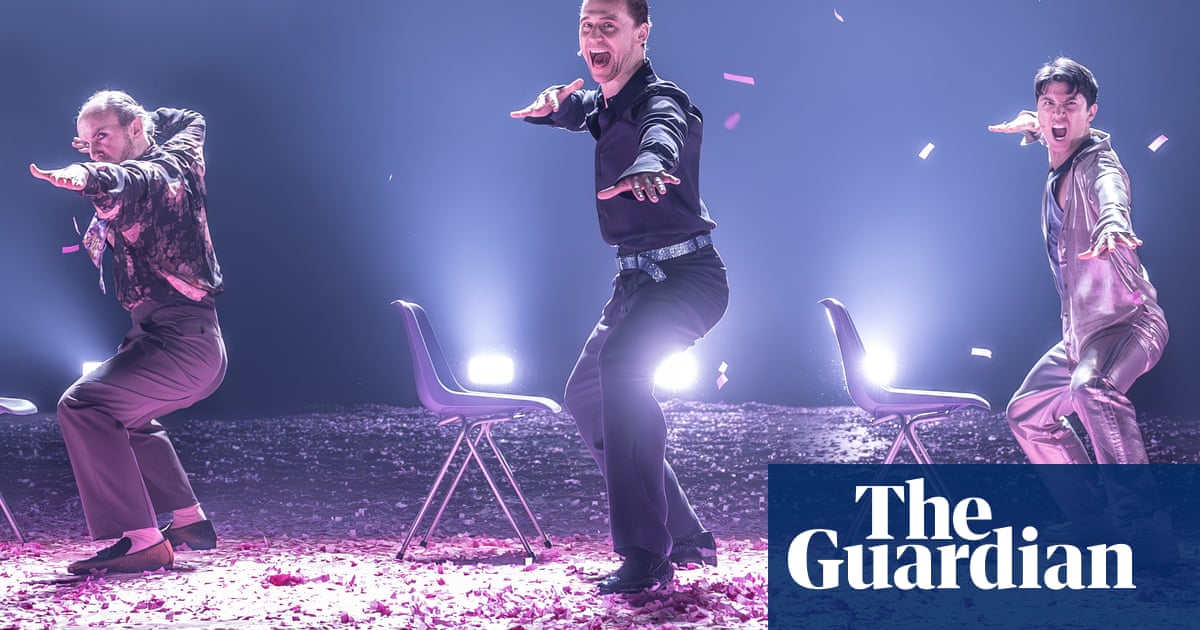Benedick in a bedazzled belt and matching sparkly shoes, Claudio clad in a gold lamé cropped co-ord. Much Ado About Nothing may be more than 400 years old but Jamie Lloyd’scurrent spin in London’s West Endplants it very much in the modern day. Key to its contemporary update? The costumes, which look as if they have been plucked straight from a Hollywood red carpet.
Recently, menswear has been leaning into a new fun fashion era. Bland black tuxes are out. In their place? Everything from sheer chiffon shirts to sparkly jewellery. Greta Gerwig’s box office-breaking Barbie film, in which Ryan Gosling leaned into his himbo character Ken on and off-screen, may be approaching its two-year anniversary but its impact is still reverberating in menswear. No one, fromthe 72-year-old Jeff Goldblumto gen Z’s Timothée Chalamet, can resist. Even atthis year’s Bafta awards, usually a more restrained carpet, a dazzling brooch was a menswear staple.
And now the Kenification effect has come to theatreland.
Soutra Gilmour, the costume and set designer for Much Ado About Nothing, which is atTheatreRoyal Drury Lane, says she started by looking at how menswear has evolved over the past couple of years. “It’s moved away from those massive oversized shapes and instead has become more conscious of the body,” she says. “The fabrics and textures have also been elevated.”
Bridget Escolme, the author of Shakespeare and Costume in Practice and a professor of theatre and performance at Queen Mary University ofLondon, says evidence suggests that Shakespeare’s original audiences would have seen its actors also “dressed in the fashions of the day”.
Gilmour began by getting the cast to try on different types of clothing. “On stage, you’re not actually looking at the clothes,” shesays. “You are looking at the person. Their body is a tool so you need to clothe them in a way that elevates rather than obliterates them.”
Gilmour andTom Hiddleston(who plays Benedick) decided on the character’s navy silk shirt and matching knife-pleated trousers because they look “like a second skin”. Gilmour adds: “This sculpts his body while still allowing him to move.”
The shirt’s giant lapels were chosen to draw attention to his face. But it is the shimmering belt added to give the look “more of a fever dream quality” that steals the spotlight as he shimmies and body rolls across the stage. Hiddleston leans into the peacock aesthetic, flashing his abs as he proclaims”: “I am loved of all ladies.”
Gilmour also wanted to challenge the norms of gender conformity. “I didn’t want to get too bogged down in whether people were wearing male or female clothes,” she says. “It’s something I’ve been doing for a long time. And it’s a constant conversation, thinking about masculinity and femininity and what those terms actually mean.”
The result? King Don Pedro (played by Gerald Kyd) wears a hot pink look including a silk blouse unbuttoned to the navel. The antagonist Don John (Tim Steed) plots Hero’s (Mara Huf) downfall in florals and pearls and at one stage the cunning Borachio (Mika Onyx Johnson) appears in a full-length flamingo pink faux fur coat.
Sign up toFashion Statement
Style, with substance: what's really trending this week, a roundup of the best fashion journalism and your wardrobe dilemmas solved
after newsletter promotion
Escolme says it is exciting to see today’s red carpet culture referenced for a play “so explicitly concerned with appearances and superficial judgments”.
The softer clothing choices for Hiddleston and others deliberately contrast with what the female cast members wear. Beatrice (Hayley Atwell) and Hero wear towering shoes while Beatrice’s jumpsuit has oversized shoulder pads.
“I wanted the women to physically take up space. I think it’s interesting to soften the men’s presence and define and raise the women’s physical presence,” says Gilmour.
Part of Shakespeare’s enduring appeal is his modern thinking, she adds. “Four-hundred years later it still feels relevant. Costume always telling a story. From gender to class there is still so much politics around clothing.”
